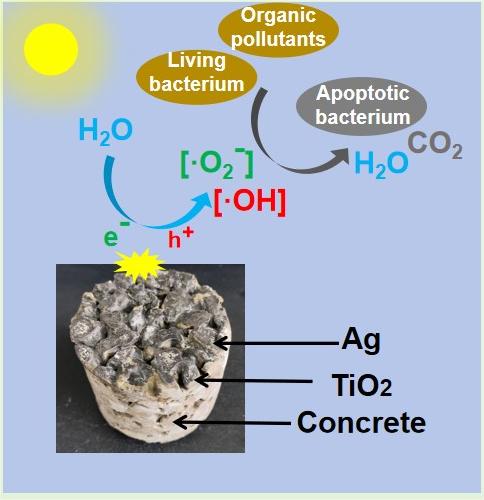
As a widely used construction material, concrete is an ideal substrate for environmental functional materials. However, ordinary concrete lacks pollution resistance. When exposed to the natural environment, it is easily susceptible to microbial growth or organic contamination. Therefore, it is necessary to enhance its surface cleaning ability through modification methods. The existing anti-pollution materials are cumbersome to prepare and have a short lifespan. In this study, we employed in-situ synthesis to construct a TiO2/Ag coating on the surface of concrete. When illuminated, the catalyst coating generates electron-hole pairs, and with the synergistic acceleration of the heterojunction interface and oxygen defects, they separate and react with water to produce hydroxyl radicals and superoxide radicals. Under simulated sunlight with an intensity of 50mW/cm2, this material can achieve an 86.4% organic matter decomposition rate and a 96.7% microbial inactivation rate, and it can remain stable over ten cycles. This study presents a viable technical solution for the design of sustainable self-cleaning building materials.
Total file downloads: 16